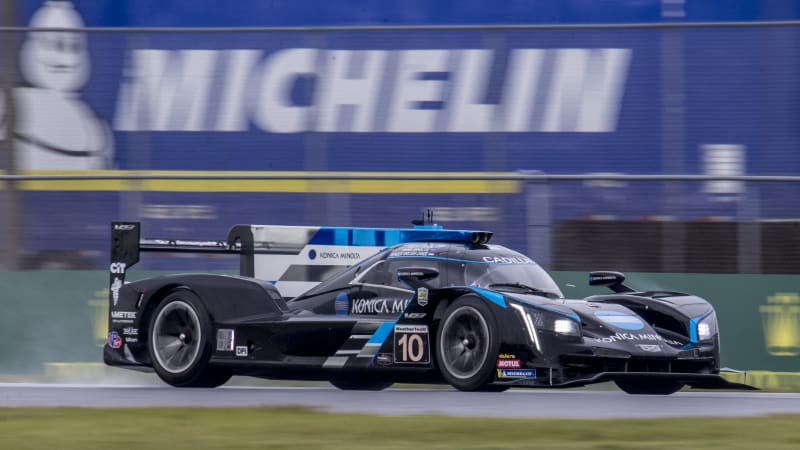Audi Repair Shop Doylestown
Call 267 279 9477 to schedule a appointment

The North American International Motor Sports Association (IMSA) and France’s Automobile Club de l’Ouest (ACO) announced they’ve come to terms on a common premier class eligible for both competitions. The potential and potentially enormous reward for manufacturers would be the ability to build a single car for entry into all of the world’s biggest sports car races — Daytona, Sebring and Le Mans especially — just like we saw in the Oscar-nominated “Ford vs. Ferrari.” The new top category is called LMDh, suspected to mean Le Mans Daytona hybrid, but neither organizing body has clarified that yet. The World Endurance Championship will usher in the new class during the 2021-22 World Endurance Championship season, potentially running alongside the recently birthed hypercar class. LMDh starts with IMSA at the beginning of the 2022 WeatherTech SportsCar Championship season, taking over from the Daytona Prototypes (DPi) as the top category.
For now, what we know is that LMDh entries will be based on spec LMP2 chassis built by any of the four current LMP2 chassis providers, Multimatic (Canada), Dallara (Italy), Ligier, and Oreca (both France). A common kinetic energy recovery system (KERS) unit that harvests braking energy will be fitted to the rear axle, providing 50 to 60 horsepower. Manufacturers will supply their own engines and be free to create bodywork within the regulations. The same chassis will also be used for the WEC’s new LMP2 class starting in 2022, but that’s a spec chassis with a fixed engine spec. More details on LMDh rules will come in March during SuperSebring weekend, when we’d expect to get an idea of engine options and horsepower targets.
The brunt of the regulations are said to have come from IMSA’s planning for what was called DPi 2.0, launching in 2022. IMSA, which counts Acura, Cadillac, and Mazda in the top class right now, got input from a pool of OEMs on DPi 2.0, but OEMs need many more answers before pledging LMDh entries. Pascal Zurlinden, head of factory racing at Porsche, said the company “would just (take) a closer look at the costs. If you can really build one car for locals and race (worldwide), it’s definitely an option. We’ll have to look into it.” McLaren likes the idea, but Zak Brown, McLaren Racing CEO, said budget is the issue. “If we can see a business model that works, we would enter.” The Woking manufacturer would apparently run a “hybrid styled to look like McLaren Automotive product that doesn’t yet exist” primarily in the WEC, with a few IMSA visits.
Ford has been non-committal, but the Dearborn automaker is said to have insisted on hybrid inclusion as a sine qua non for participation. Lexus and Lamborghini have also made noises about looking for a global series that could justify investment.
The road to LMDh is filled with questions. Important among them what happens to the WEC’s Hypercar class. With incompatible technical regulations between Hypercar and LMDh, there are suggestions a Balance of Power formula could allow the two classes run together, but that’s speculation. Toyota committed to Hypercar, and said it plans to remain in Hypercar even after the LMDh announcement because it wants to develop its own hybrid system, which LMDh won’t allow. Said a Toyota rep, “We want the possibility to improve our road-relevant hybrid technology in WEC, and we welcome the chance to test our technology against even more manufacturers.”
It isn’t clear if Hypercar will get more manufacturer involvement, though. Aston Martin signed up to Hypercar, but the English automaker has so much to focus on at the moment that we can’t be certain it will make the grid as an OEM entry. Glickenhaus and ByKolles also joined, but it won’t be fair to compare them to OEM efforts. As Racer put it, “The opening season of Hypercar would feature one giant Japanese manufacturer, a small, but historic British marque, a super tiny American brand that wasn’t sure if it would be there at the opening rounds, and Germanic vaporware.” Peugeot was a recent signatory to the Hypercar class, pairing with Oreca on an entry to start in 2022, but is said to be eyeing a switch to LMDh.
We really want to know what an LMDh car will look like. Part of the promise of the Hypercar series — and the actual thrill of IMSA’s and the WEC’s GT classes — is watching vastly different cars with vastly different power plants competing together. Lower down the order, the Audi, BMW, Corvette, Ferrari and Porsche paddocks at endurance races corral passionate fans who make visual and personal connections to the GT hardware roaring by on track. Racer said, “Manufacturers will be asked to incorporate more readily identifiable styling cues with their LMDh models.”
Regardless, manufacturers have sought a common global series for years to help them harmonize and maximize their investment and sponsorships. At least one winning team is already relishing the prospect of LMDh: Wayne Taylor, whose Wayne Taylor Racing just won the Rolex 24 at Daytona for the third time in four years, told Sportscar365 he wants to take a team to Le Mans. “If we can continue to show we can consistently win these long-distance races, then I think that’s what the manufacturers want,” he said. “Plus, I have corporate partners who have already said to me, ‘Wayne, we’re a global brand, we love Le Mans’ and are wanting to do races in other markets.” Naturally, he’s already thinking that, “Somehow we’re going to have to get Cadillac and GM focused on this.”
from Autoblog https://ift.tt/38N8rq8